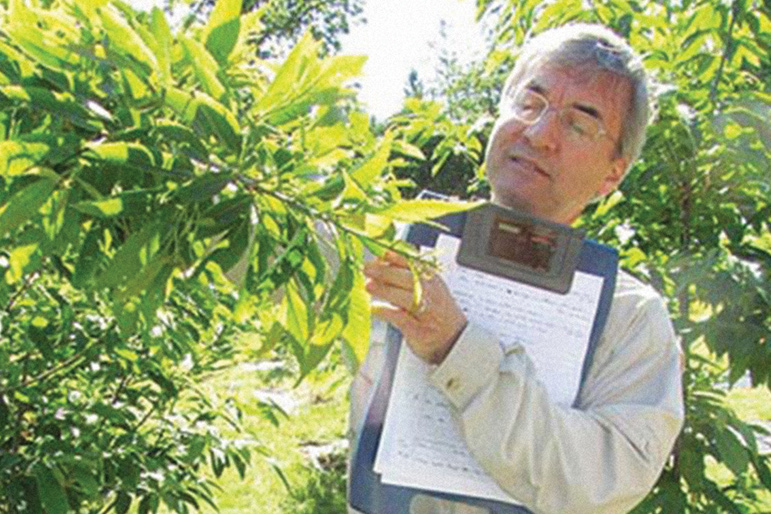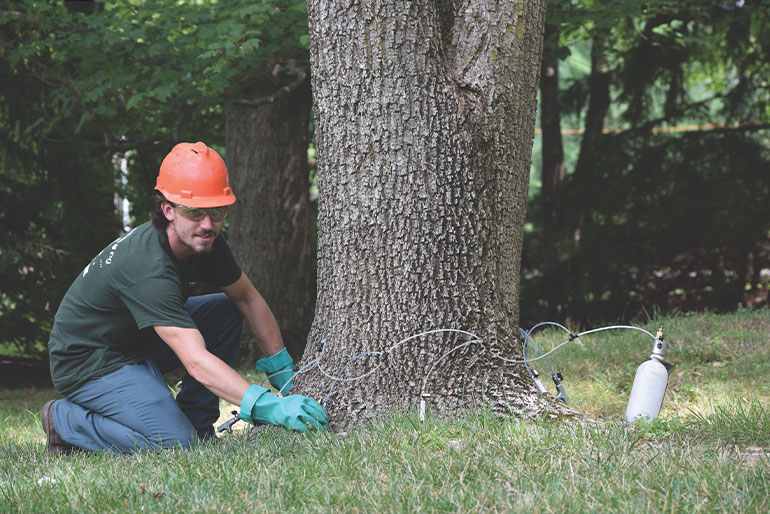
Encouraging news for a legendary hardwood tree. Current research has made a significant breakthrough in the development of a blight-resistant
American Chestnut tree.
In October 2016, we invited Dr. William Powell to speak at the Tree Canopy Conference we cosponsored at Haverford College. Dr. Powell is the Director of the Council on Biotechnology in Forestry at ESF SUNY in New York State, and a Co-director of the American Chestnut Research and Restoration Project. He has led a research team in developing transgenic new strains of American Chestnuts resistant to the blight that devastated billions of chestnut trees in North America in the 20th century.
For the past 30 years the American Chestnut Foundation has focused its work on hybridizing American Chestnuts with Asian Chestnuts to produce a blight-resistant hybrid, then back-crossing with American trees to produce as close to an American genome as possible. In contrast, Dr. Powell and his team have been successful in adding a single gene from wheat to the tree's genome. The additional gene allows the tree to detoxify the oxalic acid produced by the invasive fungus. The result is a blight-resistant clone that has all the genetic potential of an American Chestnut.
That's the first step in the process. Next, the clone needs to be hybridized with various genotypes from different North American regions, which will result in genetic diversity of the new blight-resistant American Chestnut tree. The blight-resistant trees are being grown at plantations around Syracuse, NY. Because the transgenic trees have not yet been through the full federal approval process, their growth must be monitored, the plantation sites must be available for inspection, and the research team must ensure that they do not reproduce yet.
According to Dr. Powell, the trees are still too young to reproduce. He hopes that by the time they are old enough, which is likely to take at least seven years, the necessary approvals will have been granted by the USDA, EPA, and FDA. In the coming years this restoration project will be able to produce and distribute millions of blight-resistant American Chestnut trees for reintroduction into our American forests. Once again, this keystone species will fill the void in the forest canopy. Future generations will be able to hike through forests, smell the summer-flowering chestnuts, and observe and enjoy the animal and insect life interacting with American Chestnut trees.
This article originally appeared in the Spring 2017 newsletter - John B. Ward & Co. Timely Tree Tips

English ivy, Hedera helix is an evergreen groundcover and climbing vine hardy in the Philadelphia area. Long utilized as a ground cover, the...

The Arboretum at Laurel Hill is collaborating with Cornell University to grow hybrid oak trees at their cemetery in Bala Cynwyd.
The project was...

Oak Wilt
Oak wilt has always been one of those diseases that we were happy to not have to deal with. We were aware...